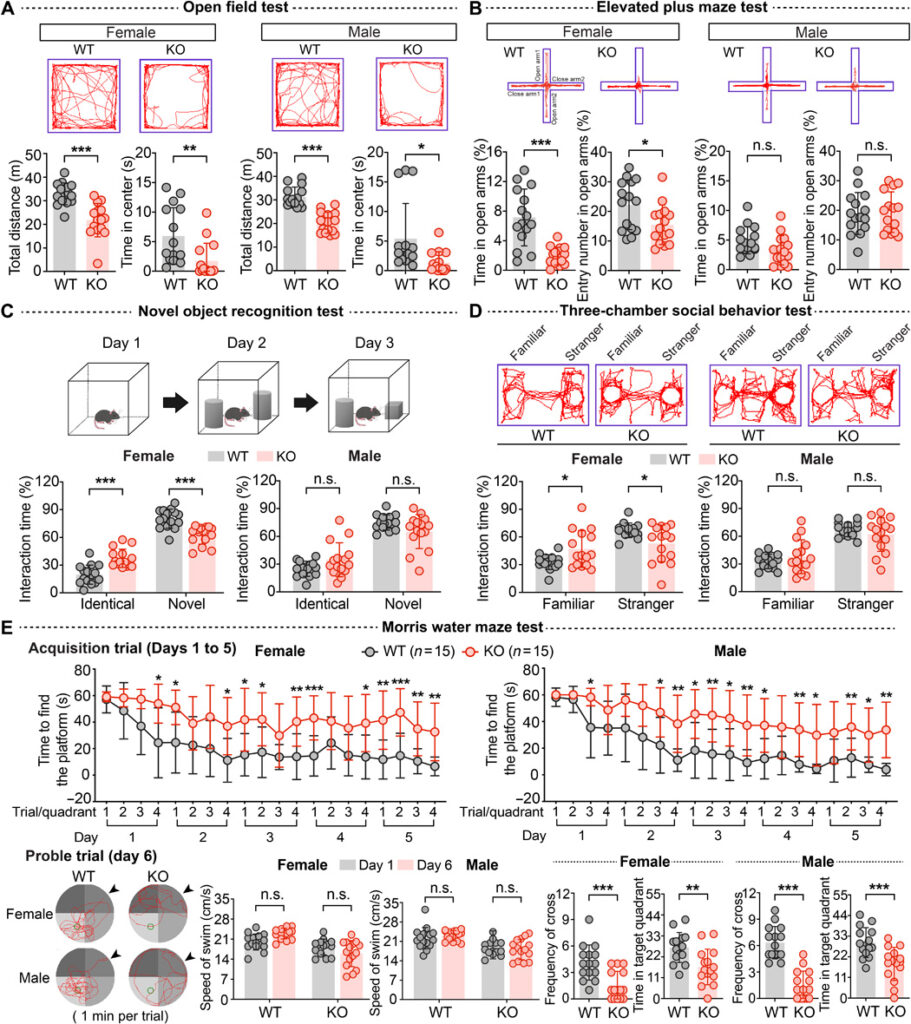RESEARCH ARTICLE DEVELOPMENTAL NEUROSCIENCE
Trappc9 deficiency in mice impairs learning and memory by causing imbalance of dopamine D1 and D2 neurons (マウスのTrappc9欠損症は、ドーパミンD1およびD2ニューロンの不均衡を引き起こすことによって学習と記憶を損なう)
Yuting Ke1,2,Meiqian Weng3, Gaurav Chhetri1, Muhammad Usman1, Yan Li1, Qing Yu4, Yingzhuo Ding1, Zejian Wang1, Xiaolong Wang1,Pinky Sultana1, Marian DiFiglia2 and Xueyi Li1,2,*
1School of Pharmacy, Shanghai Jiao Tong University, 800 Dong Chuan Road, Shanghai 200240, China.
2Department of Neurology, Massachusetts General Hospital and Harvard Medical School, Charlestown, MA 02129, USA.
3Mucosal Immunology Laboratory, Combined Program in Pediatric Gastroenterology and Nutrition, Massachusetts General Hospital and Harvard Medical School, Charlestown, MA 02129, USA.
4Department of Nephrology, Shanghai General Hospital, 650 Songjiang Road, Songjiang District, Shanghai 201620, China.
↵*Corresponding author. Email: xueyili@sjtu.edu.cn, xueyi.li@mgh.harvard.edu
Summary
Genetic mutations in the gene encoding transport protein particle complex 9 (trappc9), a subunit of TRAPP that acts as a guanine nucleotide exchange factor for rab proteins, cause intellectual disability with brain structural malformations by elusive mechanisms. Here, we report that trappc9-deficient mice exhibit a broad range of behavioral deficits and postnatal delay in growth of the brain. Contrary to volume decline of various brain structures, the striatum of trappc9 null mice was enlarged. An imbalance existed between dopamine D1 and D2 receptor containing neurons in the brain of trappc9-deficient mice; pharmacological manipulation of dopamine receptors improved performances of trappc9 null mice to levels of wild-type mice on cognitive tasks. Loss of trappc9 compromised the activation of rab11 in the brain and resulted in retardation of endocytic receptor recycling in neurons. Our study elicits a pathogenic mechanism and a potential treatment for trappc9-linked disorders including intellectual disability.
rabタンパク質のグアニンヌクレオチド交換因子(GEF)として作用するTRAPPのサブユニットであるtransport protein particle complex 9 (trappc9)をコードする遺伝子の遺伝子変異は、これまで明らかになっていないメカニズムによって脳の構造奇形を伴う知的障害を引き起こす。ここでは、trappc9欠損マウスが幅広い行動障害と出生後の脳の成長に遅延を示すことを報告する。さまざまな脳部位の体積減少とは対照的に、trappc9のnullマウスの線条体は拡大していた。またtrappc9欠損マウスの脳では、ドーパミンD1受容体とD2受容体の不均衡が観察された。ドーパミン受容体の薬理学的操作は、認知課題における野生型マウスのレベルまで、trappc9nullマウスのパフォーマンスを改善した。 trappc9の喪失により、脳内のrab11が活性化し、ニューロン内のエンドサイトーシス受容体のリサイクルを遅延させた。筆者らの研究は、知的障害を含むtrappc9関連障害の病院メカニズムと潜在的な治療法を示すものである。


